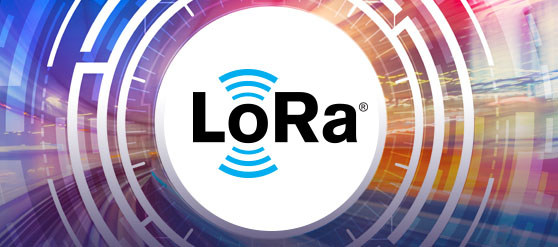LoRa is a low-power local area network wireless standard created by semtech. Low-power consumption is generally difficult to cover long distances, and long-distance power consumption is generally high. It seems difficult to make a horse run far without eating grass. The name of LoRa is Long Range Radio. Its biggest feature is that it can propagate farther than other wireless methods under the same power consumption conditions, achieving the unity of low power consumption and long distance. The communication distance is 3-5 times longer than that of traditional wireless radio frequency.


LoRa has three major features that are suitable for IoT applications:
The first major feature is the transmission distance of up to 15 kilometers.
The second major feature is low power consumption. A button battery can allow the sensing node to operate for one year.
The third major feature is low cost. The low cost of license-free frequency bands, infrastructure, and nodes/terminals makes network construction, operation and maintenance very easy.
How can LoRa low-power wide area network technology improve our lives and work?
In terms of smart homes, if smart electricity/water meters are combined with LoRa transmission, it will not only save the cost of manual meter reading, but also provide warnings in abnormal situations, allowing homeowners to understand water and electricity usage and avoid waste.
In terms of smart city applications, if smart street lights are used on the roadside, the usage status of the light bulbs can be transmitted through LoRa, and the maintenance unit can be notified in time for maintenance and replacement of light bulbs.
In terms of smart buildings, previous construction equipment is gradually unable to meet human requirements for living quality, and building intelligence has become a trend. For building renovations, temperature, humidity and safety sensors are added, and monitoring information is uploaded regularly to facilitate the supervision of building managers and keep track of the latest status of the building.
In terms of smart firefighting, every second counts in firefighting and disaster relief work as well as fire escape. Existing fire-fighting equipment has limited effectiveness when a fire occurs. Take the escape indication signal as an example. Static indication signals cannot respond to changes in the fire scene and tell refugees the correct escape direction in real time, which often delays the escape time. The dynamic guidance system utilizes the long-distance, low-frequency and low-power consumption characteristics of LoRa wireless transmission technology. When a fire occurs, the dynamic guidance host sends a signal to the dynamic guidance light panel deployed in the building. Since LoRa travels It is a low-frequency band below 1GHz, so there is no need to worry about the signal being interfered by other wireless communications. After receiving the signal, the light panel will immediately give instructions to guide the evacuees to a safe escape route.
In terms of smart agriculture, low-power and low-cost sensors are very important for agriculture. Smart agriculture applies Internet of Things technology to traditional agriculture, regularly uploading environmental data such as temperature, humidity, and salinity through sensors. This information can effectively help agriculture increase production and reduce water consumption.
In terms of logistics tracking, the battery life of the terminal is very important for tracking or positioning. Since the cost of the tracking system and battery life must be taken into consideration, it is quite suitable to use LoRa technology for tracking. Logistics companies can deploy networks in specific places based on positioning needs. For example, during the transportation process, goods will be placed in warehouses for most of the time, or distributed to various places by trucks, so companies only need to set up networks in warehouses, LoRa gateways are installed in the logistics network coverage area and even on trucks, so that the trackers on the goods can be connected to the network. For business operators, it enhances management and efficiency and prevents the loss of goods; for consumers, it can also play a role in controlling the flow and schedule of goods.